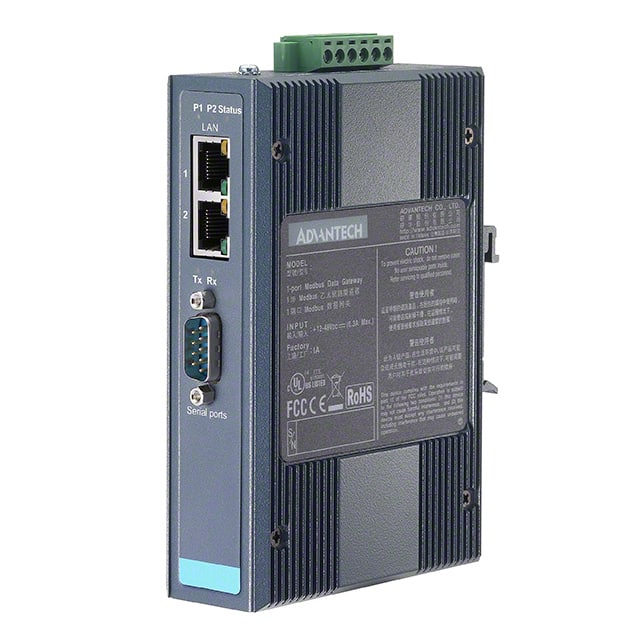Ⅰ. Networking Solutions
Ⅱ. Physical Characteristics of Networking Solutions
Ⅲ. Electrical Characteristics of Networking Solutions
Networking solutions refer to technologies and services that facilitate communication and data exchange between devices, applications, and users across networks. Here are some common networking solutions:

Network Infrastructure: This includes the physical components of a network, such as routers, switches, firewalls, and cables, that enable data transmission between devices.
Network Security: Network security solutions protect networks from unauthorized access, viruses, malware, and other cyber threats. This includes firewalls, intrusion detection and prevention systems, VPNs, and antivirus software.
Cloud Networking: Cloud networking solutions allow organizations to manage and access their network infrastructure from a cloud-based platform, enabling greater flexibility and scalability.
Wireless Networking: Wireless networking solutions enable devices to connect to a network without cables, using technologies such as Wi-Fi, Bluetooth, and cellular networks.
Software-Defined Networking (SDN): SDN solutions allow network administrators to manage network traffic and configure network devices through software, rather than relying on manual configuration.
Network Monitoring and Management: Network monitoring solutions provide real-time visibility into network performance, while network management solutions automate tasks such as network configuration and troubleshooting.
Unified Communications: Unified communications solutions integrate different communication tools, such as voice, video, messaging, and email, into a single platform, making it easier for users to collaborate and communicate.
Physical Characteristics of Networking Solutions
Networking solutions have various physical characteristics that depend on the specific technology or service being used. Here are some common physical characteristics of networking solutions:
Size and form factor: Networking equipment comes in various sizes and form factors, depending on the intended use. For example, routers and switches for small offices may be compact and designed for desktop use, while those for large data centers may be larger and rack-mountable.
Port density: Networking equipment usually has multiple ports for connecting devices, and the number of ports can vary depending on the device's size and intended use. For example, a small switch may have 4-8 ports, while a larger switch or router may have dozens or hundreds of ports.
Power requirements: Networking equipment requires power to operate, and the power requirements can vary depending on the device's size and intended use. For example, a small switch may require only a few watts of power, while a large data center switch may require several kilowatts.
Cooling requirements: Networking equipment generates heat during operation, and proper cooling is essential to prevent overheating and damage to the equipment. Larger networking equipment usually requires more cooling capacity, such as fans or air conditioning.
Redundancy: Networking equipment can have redundant components, such as power supplies or fans, to ensure high availability and minimize downtime in case of component failure.
Cabling: Networking solutions use various types of cabling, such as Ethernet cables, fiber optic cables, or coaxial cables, to connect devices and transfer data. The type of cabling used depends on the network's requirements, distance, and bandwidth needs.
The physical characteristics of networking solutions vary depending on the specific technology or service being used, and they are designed to meet the requirements of different network environments and applications.
Electrical Characteristics of Networking Solutions
Networking solutions have various electrical characteristics that depend on the specific technology or service being used. Here are some common electrical characteristics of networking solutions:
Voltage requirements: Networking equipment requires a certain voltage to operate, and the voltage requirements can vary depending on the device's size and intended use. For example, a small network switch may require a voltage of 12V, while a larger switch or router may require 48V.
Power consumption: Networking equipment consumes power during operation, and the power consumption can vary depending on the device's size and intended use. Larger networking equipment usually consumes more power than smaller equipment, such as switches or routers.
Power over Ethernet (PoE): PoE is a technology that enables network devices, such as IP cameras or wireless access points, to receive power over Ethernet cables, eliminating the need for separate power cables. PoE can provide power up to a certain wattage, depending on the PoE standard used.
Current requirements: Networking equipment requires a certain amount of current to operate, and the current requirements can vary depending on the device's size and intended use. For example, a small network switch may require a current of 1A, while a larger switch or router may require several amps.
Surge protection: Networking equipment can be susceptible to power surges or spikes, which can cause damage or data loss. Surge protection is often built into networking equipment to protect against these events.
Grounding: Proper grounding is essential to ensure safe and reliable operation of networking equipment. Networking equipment is often designed to be grounded using a three-pronged power cord or other grounding mechanisms.
The electrical characteristics of networking solutions vary depending on the specific technology or service being used, and they are designed to ensure safe and reliable operation of the equipment while meeting the requirements of different network environments and applications.
标签:networking



